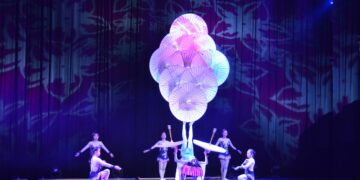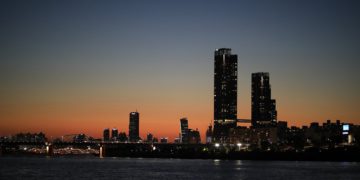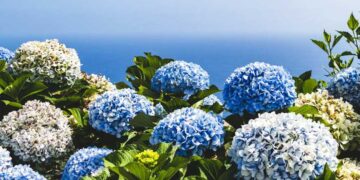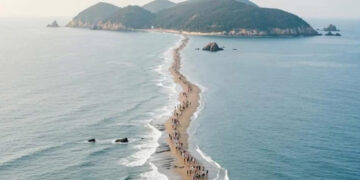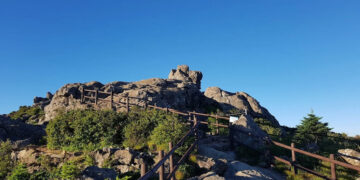Last Updated on 3 years by admin
Gongju, a historic city in the Chungcheongnam-do region of South Korea is a museum in itself. The beautiful city was capital of the Baekje Kingdom and was formerly named as Ungjin. Gongju city is the perfect mixture of history and nature. Remains of the Baekje Kingdom and its historical areas are some of the best archaeological sites of Gongju. There are several attractions from the Three Kingdom Era as well that show the struggles faced by the city.
The city is popular as it is one of the sites that houses artifacts from Baekje Historic Areas, a UNESCO World Cultural Heritage Site.
So, here are some of the beautiful sights in Gongju that you need to check out for some awe-inspiring attractions!
Magoksa Temple
Magoksa Temple is one of the most famous Buddhist monasteries in Korea. Built in the 9th century, this temple is an important center for Korean Buddhism. It was built during the time when Seon Buddhism was starting to spread in the peninsula.
The distinct architecture of the temple makes it certainly a place to visit in your trip to Gongju. A stream bifurcates the Magoksa temple into two sections, southern and northern sections. The northern compound houses the temple’s main hall, Daegwangbojeon and a stone pagoda. The five-story pagoda has a Tibetan-style top that was built in the 14th century.
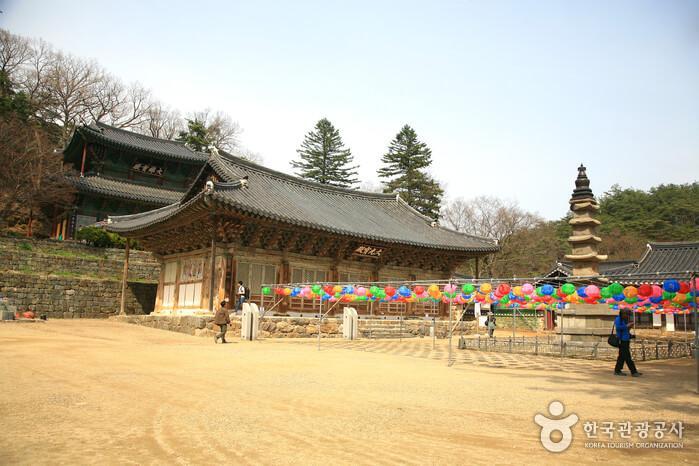
There is a juniper tree between the Daegwangbojeon Hall and Eungjinjeon hall of the temple. It is believed that the juniper tree was planted by Kim Gu when Korea was liberated from Japan’s colonial rule in the year 1946. Magoksa temple is a must-visit place in Gongju if you want to witness the expansion of Buddhist culture during ancient times in Korea.
Gongju Gongsanseong Fortress
Gongju Gongsanseong Fortress is an ancient fortress located in Gongju. It is one of the oldest archaeological sites of Gongju. It was built during the reign of the Unglin period between 475-538. The beautiful architecture of the fortress gives us a glimpse of advancement in architecture and construction methodologies. Many distinct architectural and construction techniques were found in the remains after excavating this ancient fortress. The artifacts found during the excavation process represent architectural techniques gained from exchanges from China and Japan.
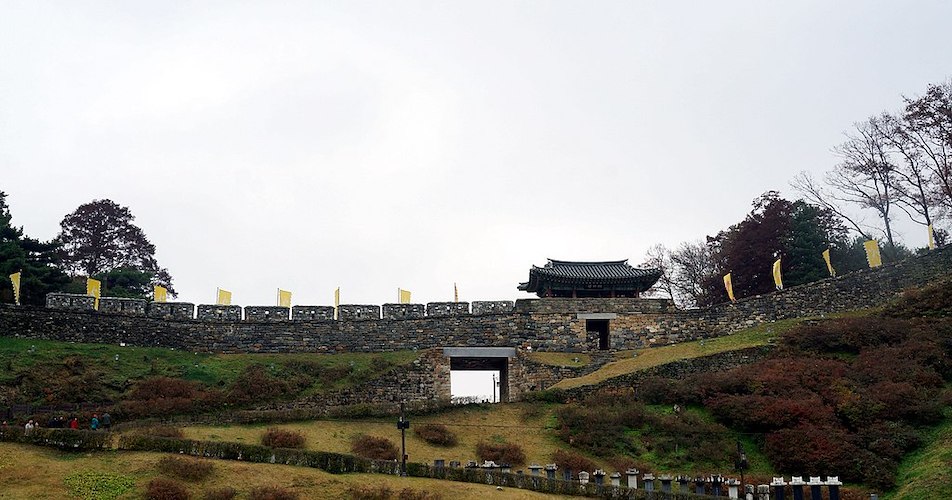
The fortress wall is about 2.5 km long giving you two options of how to go about exploring the fortress. You can either head to Geumseoru, the west gate, and walk along the trail. The other option is that you head to the top of the fortress. The whole fortress region houses around 80 building sites, drain channels, reservoir facilities, roads, and much more!
Gongju Hanok Village
It is a new hanok village built in 2010 between the Tomb of King Muryeong and Gongju National Museum.
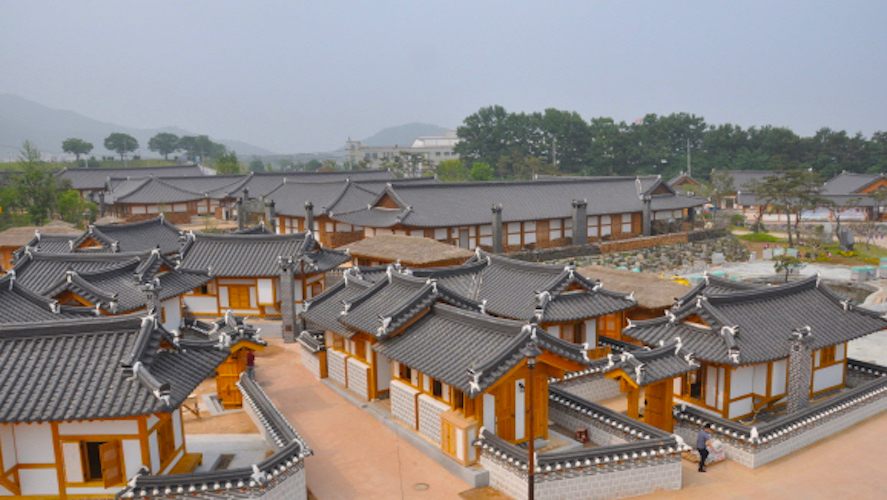
The hanok village, also known as Gongju Traditional Korean Village, has several individual accommodations, additional facilities, and a shopping center. All the buildings are built using the traditional hanok architecture. Around the village, you will be able to indulge in several traditional Korean cultural activities, including traditional Korean wedding ceremony.
Tomb of King Muryeong
The Tomb of King Muryeong holds the bodies of King Muryeong, Baekje’s 25th king, and his queen along with more than 2900 artifacts. It is the only identified royal tomb from the Three Kingdoms Period.
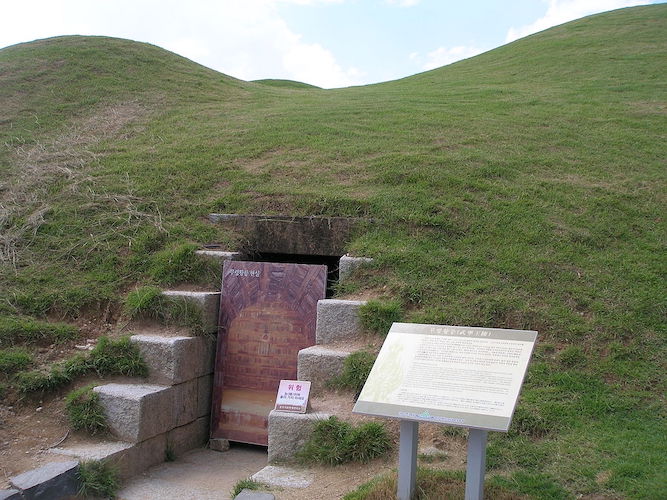
The tomb was an accidental discovery during an installation of pipes to prevent flooding of nearby areas. To preserve the area, the excavation sites are closed but you can look at the recreation of the interiors of Tomb No. 6 and the Royal Tomb of King Muryeong.
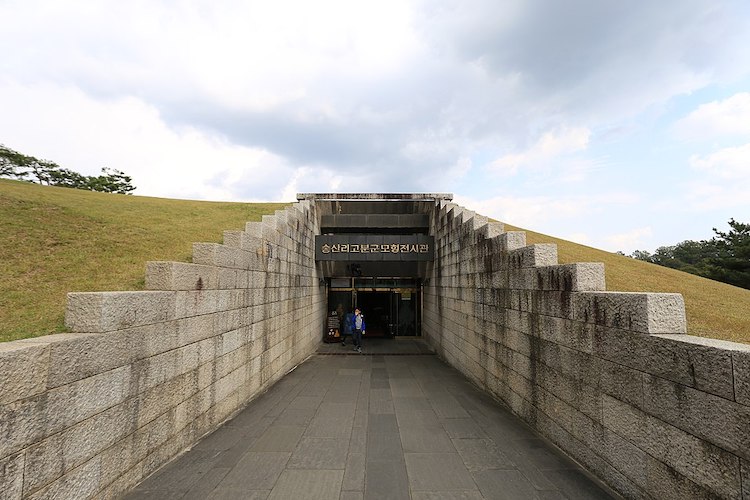
There are supposed to be 17 graves from the era in this area but to date, only 7 have been discovered. The artifacts from the tomb include the crown of the king and queens, their ornaments, and many other royal accessories. You can check out these artifacts in the Gongju National Museum and the exhibition halls of Songsan-ri Ancient Tombs.
Gongju National Museum
Gongju National Museum is a living encyclopedia of this beautiful city. It holds a variety of prominent exhibits of the Baekje Kingdom and also displays artifacts of King Muryeong’s Tomb. There are several other exhibits like Prehistoric and Ancient Culture Hall that display artifacts and findings of ancient eras, ranging from the stone age to the prehistoric age.
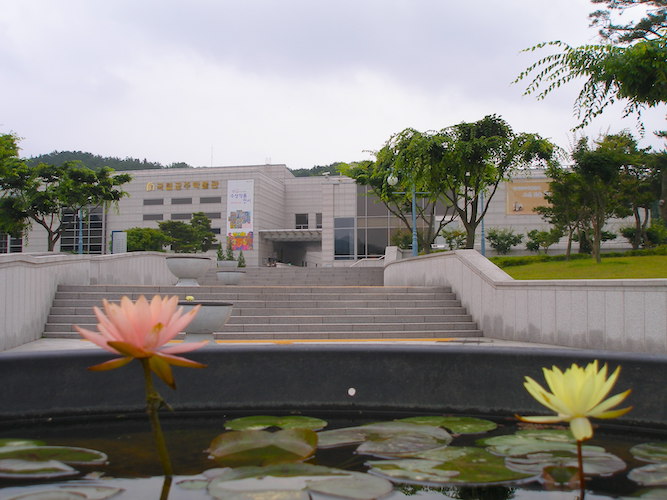
You can also find some Buddhist artifacts from Daetongsa Temple and Seohyeolsa Temple like stone structures in the museum. Visitors can also visit Jeongjisan Historical site that is famous for its memorial services in the Ungjin Baekje era.
Edge Hanok Café
Edge Hanok Café is the most famous café in the city of Gongju where you can relax and recuperate after all that exploration of the city. The cafe is popular for its variety of drinks and delicious pastries.
The interior of the cafe is quite alluring with modern and traditional architectural design elements. Edge Hanok Café is spacious, and it gives a sense of serenity while you enjoy some delicious drinks and food.
As the cafe is located close to Gongju Gongsanseong Fortress, you can take a break here during the trip.
Final Words
These are some of the best and must-visit places in the city of Gongju. You will get the vibe of the historical background and royal stature of this ancient city by visiting these places.
Love it? Pin it!
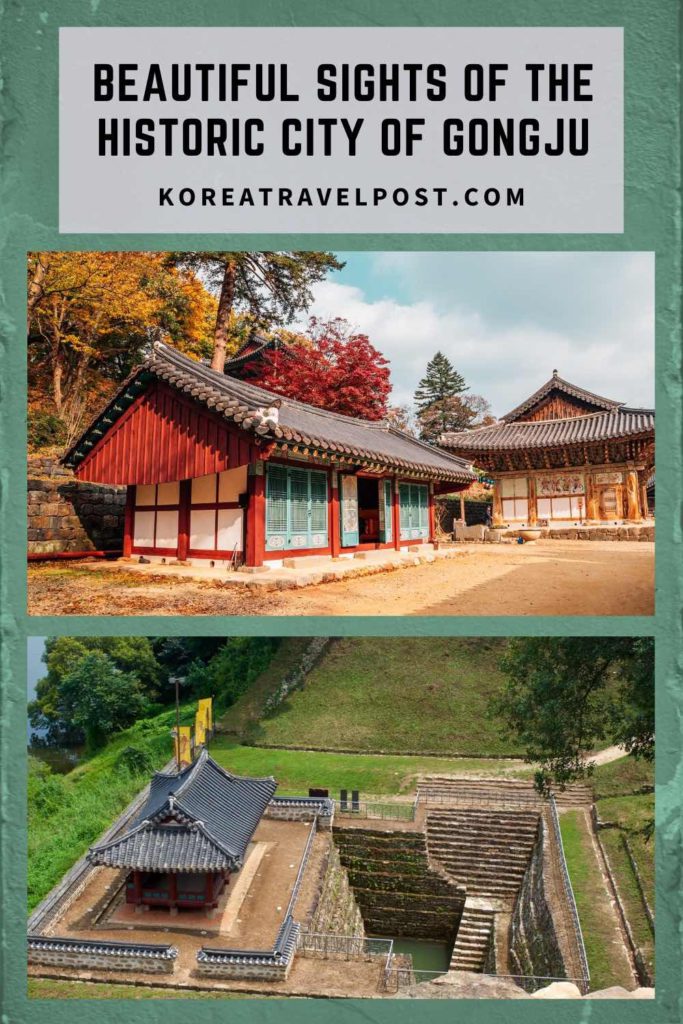
Don’t forget to check out these other South Korea travel posts:
- Historic Magnificence of Gyeongsang-do Area – 100 Must-Visit Tourist Spots in Korea
- Best Historic Places in South Korea
- Go on A Historical Adventure in South Korea – Things To Do in Gyeongju
- Best Whimsical Hanok Cafes In Seoul
10,204 total views, 18 views today




